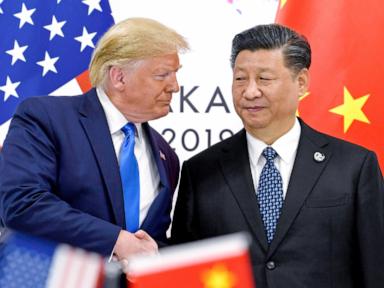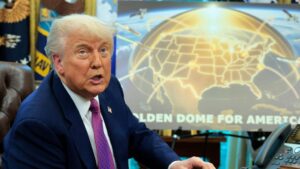
China has firmly rejected the latest threat from the United States, urging President Donald Trump to retract his proposed 100% tariff on all Chinese imports. This call comes amid escalating tensions in the ongoing trade war between the two nations. The conflict intensified after China imposed stricter regulations on rare earths—essential minerals used in electronics—leading to Trump’s announcement over the weekend.
In a move that shocked many observers, the Chinese government implemented new restrictions on rare earth exports on September 28, 2023. This decision was described by Trump as an unexpected escalation, labeling it an “out of the blue” action. Despite this, he has not withdrawn his economic threat but has taken a somewhat conciliatory tone in recent statements. In a post on Truth Social, Trump remarked, “The U.S.A. wants to help China, not hurt it!!!”
The Chinese response was swift and assertive, with the Ministry of Commerce issuing a detailed statement on Sunday. The ministry criticized the U.S. for “severely damaging the atmosphere of trade negotiations” and called for a recalibration of the current approach. Lin Jian, a spokesperson for the Chinese Ministry of Foreign Affairs, emphasized that if the U.S. continues on its unilateral path, China would take “resolute measures” to protect its interests.
Impact on Trade Relations
The trade war has escalated into a multifaceted conflict, with both nations applying various measures to exert pressure. The U.S. has restricted China’s access to advanced computer chips, while China has halted imports of American soybeans, leading to a series of retaliatory actions. These developments are reflected in the latest economic indicators, which highlight the negative impact on bilateral trade.
Recent data released by Chinese authorities indicates a significant downturn in exports to the U.S. Over the past six months, exports have declined by 27% in September compared to the previous year. This trend underscores the broader ramifications of the trade tensions, affecting businesses and consumers in both countries.
The ongoing disputes are not only economic but also geopolitical, as both nations navigate a complex landscape of competition and cooperation. With the U.S. administration facing pressure to manage its trade policies effectively, the stakes are high for both sides as they seek to protect their respective economies.
As the situation unfolds, the international community watches closely, aware that the outcomes of these negotiations will have significant implications for global trade dynamics. The call for dialogue and resolution remains critical as both nations confront the challenges posed by their current standoff.







